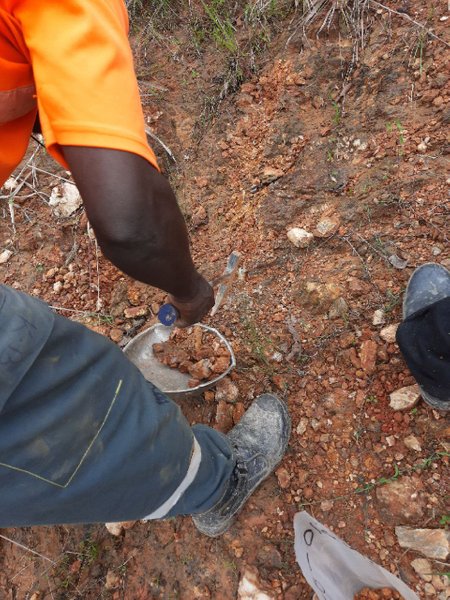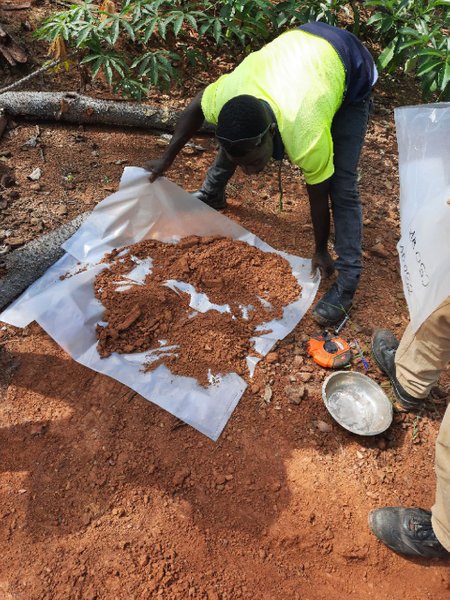GEOLOGICAL SAMPLING IN THE FIELD
CONCEPT OF SAMPLING SAMPLING
In the field, where we have identified our outcrop of interest, we take part of the outcrop as samples for laboratory analysis. This helps us to assess the composition of elements that is contained in that area or within the given locality.
Also, in picking our samples, we must be careful not to contaminate it with impurities. Otherwise, we may obtain elemental values which may not be a true reflection of the given area. This process of introducing foreign materials into the collected samples is known as Salting.
To collect our samples in our sample bags, we need to clean the surface and begin sampling at intervals. Where the sample may be too much to be contained in one bag, we cone and quarter it.


CONCEPT OF CONE & QUATER
Cone and Quater : This is very useful when the sample is too much to be contained in a single sample bag. This is done by homogenization the entire sample and coning it. Then we divide it into 4 parts. After which we bag the samples by picking diagonally. 6 Here, we took samples from the interval of 1.7m. They were too much so we had to use cone and quarter


AREAS OF INTEREST IN SAMPLING
Where we can clearly see the cross cut section of the earth, we will visit so we know how the earth is behaving on the inside. So, we are looking for pits, old trenches, construction sites, and so on.
done so that we can know the specific composition of various elements within the pit/site. Here, we sample across the trench at various intervals. And in sampling pits/trenches, we make sure that priority is given to the alteration zones or shear zones.
This is because, these are the areas we expect to find mineralization. We do 1 meter or 2 meter sampling of areas of the same lithology or rock mass till we reach different lithology such as an intrusion, shear zone or alteration and then we sample that one alone.
This is because, these are the areas we are most interested in.


But before we take the samples in these exposures, we must keep in mind to first take the dip and strike of the structures so that we can know the behaviour of our elements of interests.
In the exposure above, some key notes are observations include;
- Quartz veins undergoing anastomosis
- feldspathic sandstones becoming kaolinite.
- Hematite alterations.
- Graphite alterations, etc.
Note: These are all suspicions until the laboratory results finally comes out.
With our data, we can then draw suitable curves which represent our elements of interest and be able to make further analysis and deductions.
Thank you for your attention.
@tipu curate
;)
--
This is a manual curation from the @tipU Curation Project.
Upvoted 👌 (Mana: 2/7) Get profit votes with @tipU :)
Hi, @njaywan,
Thank you for your contribution to the Steem ecosystem.
Please consider voting for our witness, setting us as a proxy,
or delegate to @ecosynthesizer to earn 100% of the curation rewards!
3000SP | 4000SP | 5000SP | 10000SP | 100000SP
Hello @njaywan, Your post has been supported by @tucsond using @steemcurator07 account.
Thank You for making a post in the #Science/ #Computing/ #Technology category. We appreciate the work you have put into this post.
We have analyzed your post and come up with the following conclusion :
Regards,
Team #Sevengers
Follow @steemitblog for all the latest update and keep creating quality contents on Steemit!
Geologist play major role in exploitation of minerals. Your field is one of the best in engineering. Keep sharing bro
Thanks bro. I am learning so much about your field from you. It is quite interesting.
You are welcome